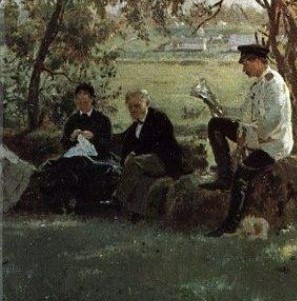“It was the best of times, it was the worst of times…”. The opening line says all that is needed to be said about the book. The time was worst, for it was tainted with hatred, violence, and vengeance. The time was also the best because there were love and compassion which endured it all.
The only historical novel that I’ve read of Charles Dickens, A Tale of Two Cities moved me like none other. I can still feel the effect of the suspense and tension even when writing the review a few days later.
Set on the backdrop of France before and after the French Revolution, Dickens weaves a sensitive and sympathetic tale on all those affected while laying down the grounds which caused the frenzy. Dickens’s historical portrayal is balanced and impartial. He shows what lead to the uprise of the peasants so brutally against the king and aristocracy. They were suppressed and were treated no better than animals. When people are so treated like beasts for a long time, it is no wonder that they would turn beasts eventually. That is what happened with them and Dickens is full of sympathy and empathy. But the reign of terror that followed exercised more than retributive justice. Like the bloodthirsty vampires, it hunted the innocents whose only crime was being of aristocratic blood. Dickens boldly exposes this monstrous side as well. He doesn’t judge the frenzied Republic, nor condemn it, but he compares the action to a season of pestilence where some will have a secret attraction to the disease. In short, Dickens shows the abuse of power by both aristocrats and the republicans equally.
The story is one of the warmest of Charles Dickens. Witty and bold would be my description of Dickens’s writing, and it may extend to being sympathetic. But I wouldn’t have associated warmth with his writing. So it seems I still haven’t fully comprehended him. The story drew me in from its opening. Though it had a bit of a disorganized structure and some repetitive writing, it was a solid four-star for me. The storyline was beautiful irrespective of the brutality and my nervous tension.
The characters, being few (another surprise for a Dickens book), it was easy to keep close contacts with them all. I’ve read many reviews of the book where it was said that they disliked Lucy Manette, so I went into the read with a prejudiced mind. But to my surprise, I liked her from the start. I also liked Charles Evremond, Dr. Manette, and Sydney Carton. I felt that all of them were victims, and were full of sympathy. The latter, however, rose to the heights of a hero at the end, and without prejudice, I believe Sydney Carton is the noblest hero that ever graced classical literature for giving his life to keep a life dear to the woman he loves. While I’m at the characters, I must say a word about the villain of the story. It is none other than Madame Defarge – a sinister woman – a sworn enemy of the aristocratic Evremond family (with reasons of course), but who displays a disproportionate propensity for vengeance. Charles Dickens seems to have surpassed Dumas there, for Madam Defarge surpassed Milady de Winter of The Three Musketeers in her villainy.
The book was a solid four-star as I already mentioned until I reached the final few chapters. Those few chapters took me through such a bittersweet journey that my rating jumped up another star and complemented the book with a firm five star.
Rating: 5/5



